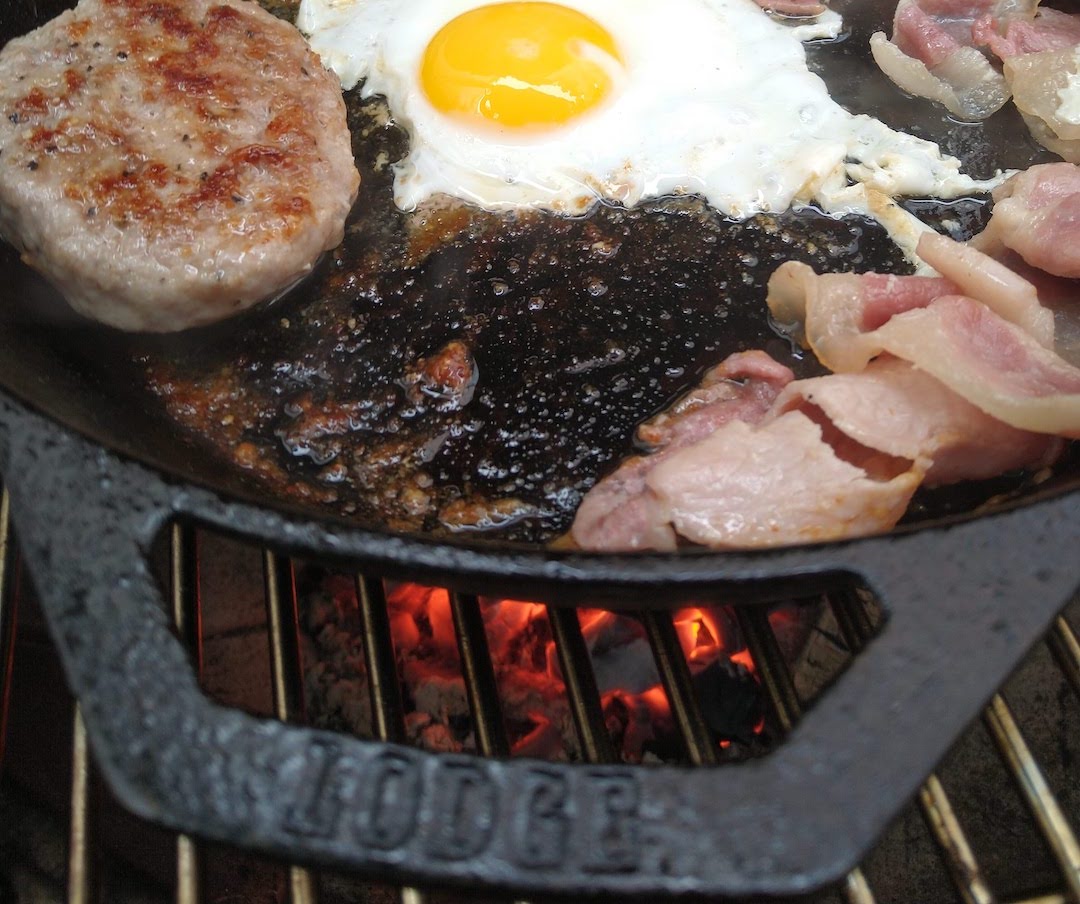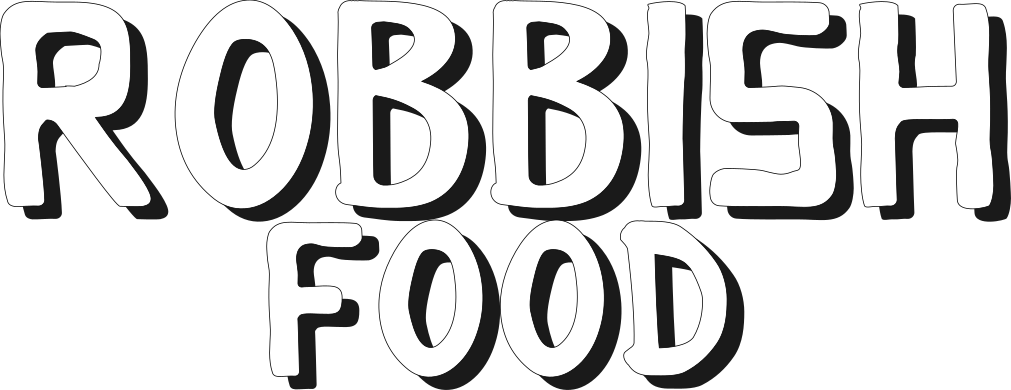Science: Cooking & BBQ with cast iron

What is it about cast iron that we all love so much? I remember when I bought my first cast iron skillet, I was so excited about it and spent much of that first weekend reading about how, and then seasoning it (it was the 12” Lodge skillet pictured above, as it happens).
For sure a part of it is the nostalgia, the fact that these have been around, pretty much looking exactly the same for years and years. Probably some of the earliest pans were like this, and it’s cool that they haven’t really changed much. Mine lives in the draw, but I like to think one day I might hang it on the wall permanently on display with others.
But for me, a big part of the love affair is the nerd-y science behind it.
1. What is cast iron?
Common type of iron varies across the world - in some countries when people talk about iron skillets they may be taking about cast iron, others they might be talking about wrought iron.
You can buy both, with similar, yet of course, slightly different properties.
A cast iron pan is one that was made by pouring molten iron into a cast/mould and letting it cool in shape. Wrought iron pans, on the other hand, are made by heating a piece of iron so its more malleable and then hammering it into shape. Wrought iron is actually stronger than cast iron, as the process of heating + hammering actually strengthens it each time. Whilst cast iron is more brittle, for cooking applications its unlikely that you are going to be doing anything so strenuous that it damages it though. Cast iron, has the advantage though, as it is generally thicker and heavier than wrought iron pans can get (this is also a disadvantage if you want some benefits of cooking on iron but lighter weight then wrought iron cookware may be worth looking at).
2. Reasons not to cook using cast iron
So lets get this out the way upfront - there are a couple of reasons you seemingly really shouldn’t cook with cast iron:
-
Iron is a reactive metal which means, as the name suggests, that it reacts with certain substances - specifically acidic substances. It is generally advised not to use acidic ingredients such as tomatoes if you are cooking in cast iron
-
It takes a long time to heat up - if you have a cast iron skillet it can take some time before it really gets hots, iron takes a while to heat up as it is a poor conductor of heat (compared to other metals), so it takes a while for the heat to conduct throughout the material of the pan
-
As a result of the above, it can have hot-spots - not only will its poor conducting qualities mean it takes a while to heat through, it takes even longer to heat through evenly. If you do not take the time to pre-heat it you will have hot and cold spots across the pan
-
If you are familiar with the design of a traditional cast iron skillet you will recognise it is just one big piece of metal. Modern saucepan design has cleverly recognised that noone wants third degree burns every time they touch a handle so have used different materials for handles or disconnected them suitably to slow conduction of heat to the handle. Cast iron skillets do not - after fully pre-heating and cooking for a short time, the little handles are dangerously hot.
3. Advantages of cooking with cast iron
Ok, so quite a few drawbacks it seems (and I didn’t even mention the fact that cast iron pans are really heavy, and if not washed and dried properly rust easily!), so why do we still use cast iron? Why do I love my cast iron pans more than any others?
The answer lies in science. The reason iron is such a delight to cook with is its thermal mass properties. Iron has the capacity to store and retain a huge amount of heat energy - much like the thermal mass of ceramics in kamado BBQs and the principal of how a pizza stone works.
If you had a regular copper or aluminium pan, these metals are a bit like the opposite of iron - they conduct heat well which means they are quick to heat up and don’t have hotspots, however they have much lower thermal mass*. If you heat an aluminium pan up, its going to be searing hot across the base of the pan pretty quickly, but drop a steak on that and the temperature is immediately going to drop considerably. This makes it much harder to get a decent sear on something like a steak, as that heat energy almost immediately dissipates on contact with the steak. Even if you let the pan sit there heating up for 20 minutes, there is a limit to how much energy the pan can retain and there is no getting around it.
If you do the same thing on a cast iron pan, it will take longer to be searing hot (maybe 10 minutes before the entire base of the pan is evenly hot), but in that time the cast iron has been able to store up a lot more energy (because it has a much higher thermal mass that copper/aluminium). Drop a steak on a hot cast iron pan and it might not even register any temperature change. The cast iron has plenty of heat energy that it can just keep applying to that steak. This is why cast iron pans are so great for restaurant quality steaks, and why BBQ grills often have cast iron options for searing.
(* aluminium actually has a higher heat capacity than iron, but because iron is far denser, it means it can retain a lot more heat energy at the same temperature)
4. How should I season my cast iron pan?
The first thing to mention is seasoning. As we have covered, cast iron is highly reactive, which also means it is very quick to rust if not treated correctly. As well as risk of rusting, if not treated correctly food will stick to it pretty strongly.
To help protect against rust, and to help improve non-stick properties, we can season the metal. The good news is this treatment process is very simple, and furthermore, regular use of your cast iron pans with oil and at high temperatures (the best way to use cast iron!) will become self-seasoning and over the years will become well seasoned and non-stick.
Seasoning of cast iron is basically the heating of fat so that it bonds to the metal forming a tiny polymer layer on the surface. After repeatedly seasoning the pan (and regular use) the layer will have built up to a hard, black protective layer.
So how do we do it?
-
Wash and dry your pan well with hot soapy water. When drying take care not to leave fibres on the pan from the dish towel, as these can become embedded in your seasoning layer.
-
Apply and rub vegetable oil over all surfaces of the pan (handle and outside), really buff this in well so it doesn’t appear greasy and there aren’t pools or drips of oil if you leave it to sit. If there is too much oil at this stage it will be unstable once solidified in seasoning process and will be more likely to flake - The goal is to create a good layer of seasoning through re-application of microscopic layers, rather than applying a thick layer with too much oil.
-
Put the pan upside down in your oven and heat to the hottest it will go (around 220C), heat it for about 30 minutes (once oven has reached temperature). This step may cause considerable amounts of smoke in your kitchen (if doing it inside, obviously less of an issue if you are doing it in a BBQ), so make sure you have any windows or doors open you can to allow sufficient ventilation.
-
Once time is up, remove from the oven and allow to cool (leave it somewhere safe from prying hands, as it will be really hot, and as now know, iron has a large thermal mass so will remain hot for some time!)
-
Repeat the oil-buff-heat-cool process 3 more times
